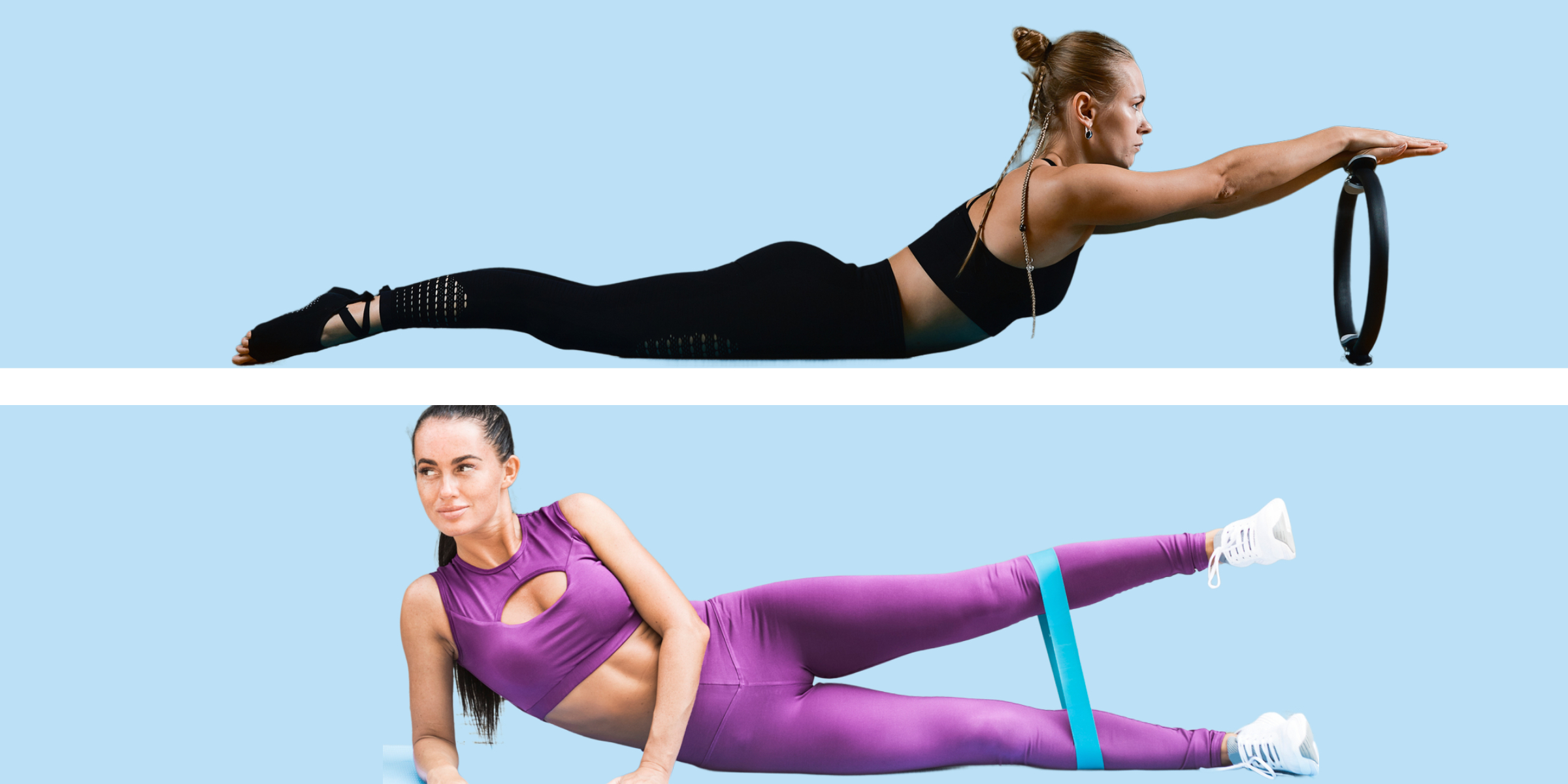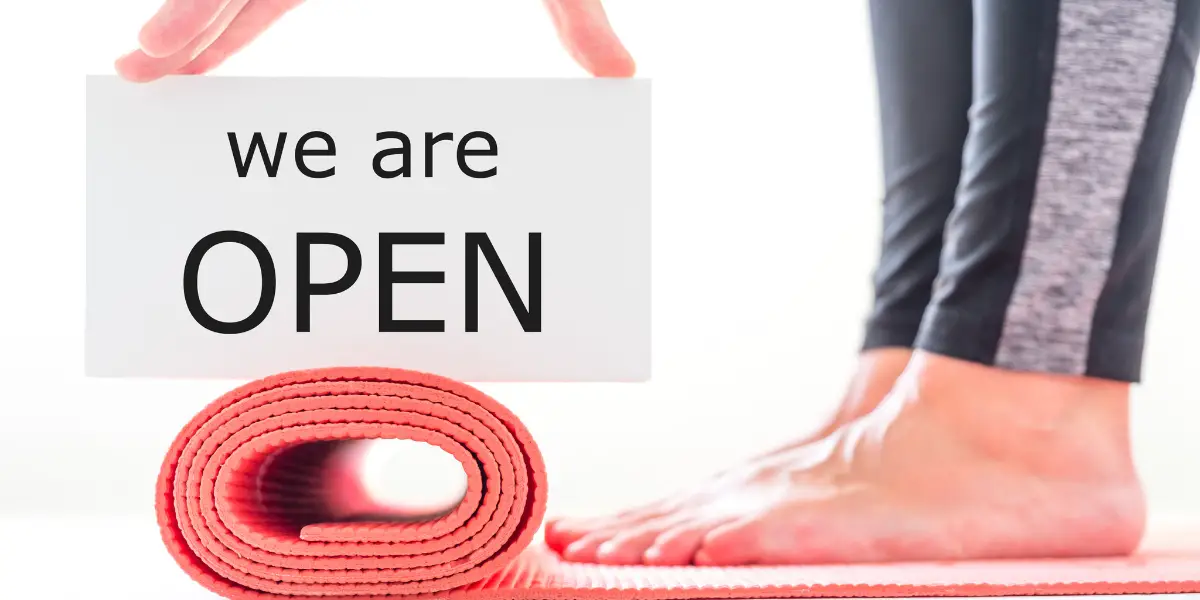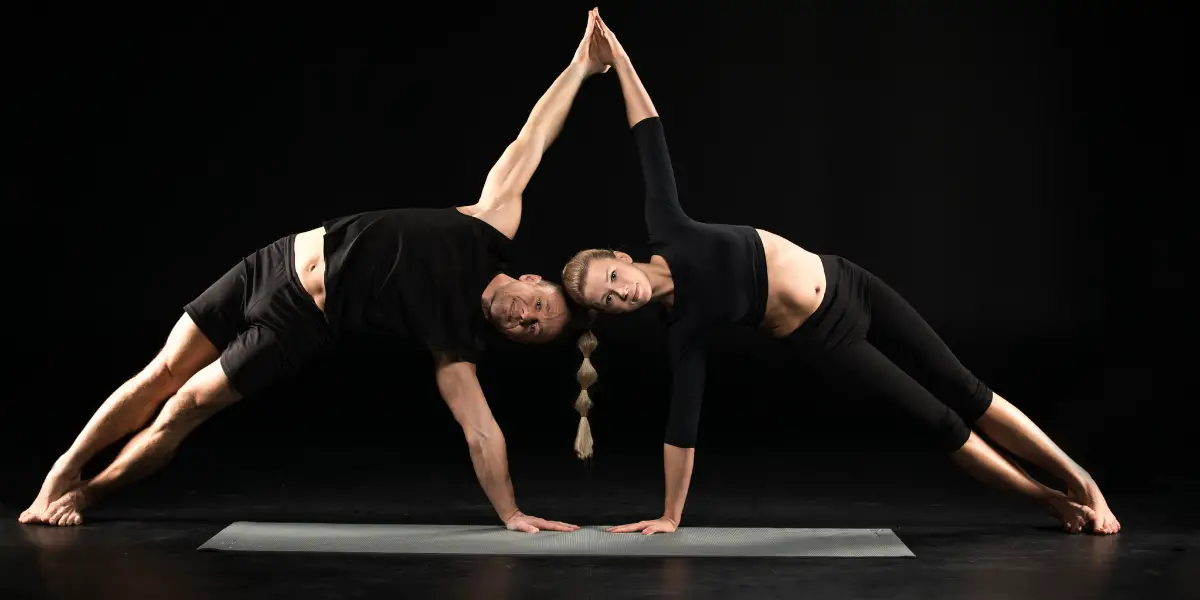Are you looking for a low-impact exercise that can help you achieve your fitness goals and improve your overall wellness? Look no further than Pilates!
This unique form of exercise emphasizes controlled movements, proper breathing, and mind-body connection to help you build strength, flexibility, and balance.
Whether you’re recovering from an injury, managing a chronic condition, or simply seeking a new fitness challenge, Pilates can offer a wide range of benefits.
One of the great things about Pilates is that it can be adapted to suit your individual needs and preferences. Whether you prefer to work out at home or in a studio, with equipment or without, there are many options to choose from.
Two popular tools for Pilates workouts are the Pilates ring and resistance bands. In this article, we’ll explore the unique advantages of each tool and provide tips for choosing the right one for your needs.
So, let’s unlock the power of Pilates and discover the benefits of these versatile and effective exercise tools!
Introduction to Pilates as a Low-Impact Exercise
You’ll find that Pilates is an excellent low-impact exercise that can help improve your flexibility, strength, and overall physical health.
Unlike high-impact exercises like running or jumping, Pilates is gentle on the joints and can be a great option for those who are new to fitness or recovering from an injury. Pilates can also help reduce stress and improve posture, making it a holistic approach to overall health.
One of the benefits of low-impact exercise is that it can be a great way to ease into a fitness routine. Many people who are new to fitness or who have been inactive for a while may find high impact exercises too intense or intimidating.
Pilates is a great option for beginners because it is low impact and can be modified to fit their fitness level. Pilates can also help them build a strong foundation of core strength that can be beneficial for other activities like running or weightlifting.
Another benefit of Pilates is that it can be done with minimal equipment. While some Pilates exercises may require equipment like a Pilates ring or resistance bands, many can be done with just a mat. This makes Pilates a convenient option for those who prefer to workout at home or who have limited access to a gym.
In the next section, we’ll explore one of the pieces of equipment commonly used in Pilates: the Pilates ring.
Pilates is a great low-impact exercise that can help improve your overall physical health. It’s a great option for beginners who are looking to ease into a fitness routine or who are recovering from an injury. While some Pilates exercises may require equipment, many can be done with just a mat.
In the next section, we’ll explore the unique benefits of using a Pilates ring in your Pilates practice.
What is a Pilates Ring?
A Pilates Ring, also known as a magic circle, is a versatile piece of equipment used in Pilates workouts. It’s a small ring made of flexible materials such as rubber or metal, with padded handles on either side.
Pilates ring benefits are numerous, as it helps to tone and strengthen muscles in the arms, legs, and core. It’s especially useful for those who want to add resistance to their Pilates exercises without putting too much strain on their joints.
To use a Pilates Ring, you can incorporate it into your regular Pilates routine. For example, you can place it between your thighs during a leg press exercise, or hold it with your hands during a chest press. The Pilates ring can also be used for stretching exercises, such as placing it around your ankles and pulling it towards your body to stretch your hamstrings. The possibilities are endless, and the Pilates ring can add a new level of challenge to your workouts.
Overall, the Pilates ring is an excellent addition to any Pilates routine. It provides a low-impact way to add resistance to exercises, which is especially beneficial for those with joint pain or injuries. Plus, it can be used in a variety of ways to target different muscle groups.
In the next section, we’ll discuss another piece of equipment that can be used in Pilates workouts: resistance bands.
What are Resistance Bands?
Get ready to feel the burn with resistance bands, the perfect tool to add extra intensity to your Pilates workout. Resistance bands are elastic bands that come in various shapes, sizes, and resistance levels. They are made from latex or rubber and can be used to work on different muscle groups such as the arms, legs, and core.
One of the benefits of using resistance bands in Pilates is that they’re lightweight, portable, and easy to store. You can carry them with you anywhere, whether you’re traveling, at home, or at the gym. Resistance bands also offer variability in your workout routine. You can change the resistance level by using different colored bands.
There are different types of resistance bands available, including loop bands, therapy bands, and tube bands. Loop bands are circular and are used for exercises that require wrapping the band around a body part, such as the ankles or thighs. Therapy bands are flat and are used for physical therapy and rehabilitation exercises. Tube bands have handles and are used for upper body exercises.
As you can see, resistance bands can be a great addition to your Pilates workout routine. In the next section, we’ll compare the unique advantages of resistance bands versus the Pilates ring. Let’s explore the differences and similarities between these two popular Pilates tools.
Comparison of Pilates Ring and Resistance Bands
Let’s dive into how the Pilates ring and resistance bands stack up against each other in terms of their benefits and uses. Both the Pilates ring and resistance bands are versatile and portable, making them ideal for on-the-go workouts. However, there are differences in their advantages and disadvantages.
The Pilates ring offers resistance in a circular motion, while resistance bands provide linear resistance. This difference in resistance can lead to different levels of effectiveness and safety in certain exercises.
Here are five key points to consider when comparing Pilates rings and resistance bands:
- Pilates rings provide a unique form of resistance training that targets specific muscle groups, such as the inner and outer thighs, while resistance bands offer a more general full-body workout.
- Resistance bands can be adjusted to change the level of resistance, which can be beneficial for those looking to increase their strength over time. Pilates rings, on the other hand, offer a consistent level of resistance throughout the exercise.
- The circular motion of the Pilates ring can help improve flexibility and range of motion, while resistance bands can be used for stretching and mobility exercises.
- Pilates rings are generally more durable than resistance bands and are less likely to snap or break during use.
- Both Pilates rings and resistance bands are low-impact and can be used by people of all fitness levels.
When deciding between a Pilates ring and resistance bands, it’s important to consider your specific fitness goals and needs. While both offer effective and safe workouts, the advantages and disadvantages of each can make one more suitable for certain exercises than the other.
In the subsequent section about Pilates ring exercises, we’ll explore some specific workouts that can be performed using this unique piece of equipment.
Pilates Ring Exercises
You can maximize your Pilates ring workout by incorporating exercises that target specific muscle groups such as the arms, core, and legs. One of the primary benefits of using a Pilates ring is that it engages multiple muscle groups simultaneously, resulting in a more efficient and effective workout.
For example, when performing leg circles with the Pilates ring, not only are you working your legs, but you’re also engaging your core to maintain proper form. In addition to engaging multiple muscle groups, Pilates ring workouts also provide a low-impact option for those who want to build strength without putting excessive strain on their joints.
The Pilates ring provides a gentle resistance that enables individuals to tone and strengthen their muscles without risking injury. Furthermore, Pilates ring workouts can be modified to accommodate various fitness levels, making it an excellent option for both beginners and advanced practitioners.
To experience the benefits of Pilates ring exercises, consider incorporating them into your daily routine. Start with simple exercises such as the bridge or the hundred, and gradually work your way up to more advanced moves. By doing so, you’ll be able to strengthen your muscles, improve your posture, and increase your overall flexibility.
Now that we’ve explored the benefits of Pilates ring workouts, let’s take a look at resistance band exercises and how they can complement your Pilates routine.
Resistance Band Exercises
Incorporating resistance band exercises into your workout routine can enhance your strength training and add variety to your Pilates practice. Resistance bands are versatile tools that can be used to target specific muscle groups and increase resistance in both upper and lower body exercises. They can also be used to add extra challenge to traditional Pilates moves, making them an excellent addition to any fitness routine.
One of the primary benefits of resistance bands is their ability to work multiple muscle groups at once. For example, a bicep curl with a resistance band not only targets the bicep muscle but also engages the shoulder and back muscles. Resistance bands can also be used to target specific muscle groups, such as the glutes, by adding resistance to exercises like squats and lunges.
In addition to their versatility, resistance bands are a great option for those who want to add resistance to their workouts without the need for heavy weights or bulky equipment. They are lightweight and portable, making them an excellent choice for at-home workouts or for those who travel frequently. Resistance bands come in various strengths, allowing you to increase resistance as you build strength and stamina.
Moving on to the next section, tips for choosing the right tool, it’s essential to understand the benefits and differences between the Pilates ring and resistance bands. While both provide unique advantages, understanding which tool will work best for your fitness goals is key.
Tips for Choosing the Right Tool
When choosing the right fitness tool, it’s important to understand the benefits and differences between the Pilates ring and resistance bands. Here are some tips to help you make the right choice:
-
Benefits vs. Drawbacks: The Pilates ring is a great tool for targeting specific muscles and providing resistance during exercises. It’s also lightweight and easy to use. However, it may not offer the same level of resistance as resistance bands, which can be adjusted to provide varying levels of tension. Resistance bands also offer a wider range of exercises and can be used for both strength training and stretching.
-
Cost vs. Effectiveness: The Pilates ring is generally more affordable than resistance bands, but it may not provide the same level of effectiveness for certain exercises. Depending on your fitness goals, you may need to invest in both tools to ensure a well-rounded workout. However, if you’re on a budget or looking for a simple tool to add to your routine, the Pilates ring may be the better choice.
-
Personal Preference: Ultimately, the choice between the Pilates ring and resistance bands comes down to personal preference. Consider your fitness goals, budget, and exercise preferences when making your decision. It’s also important to try out both tools and see which one feels more comfortable and effective for your body.
In summary, when choosing between the Pilates ring and resistance bands, consider the benefits vs. drawbacks, cost vs. effectiveness, and personal preference. By taking these factors into account, you can choose the right tool to unlock the power of Pilates and achieve your fitness goals.
Moving forward, let’s explore some final thoughts and conclusions on incorporating these tools into your workout routine.
Final Thoughts
As we conclude our exploration of the benefits and differences between the Pilates ring and resistance bands, it’s clear that both tools offer unique advantages for achieving a well-rounded workout routine. However, if you’re looking for a way to add more resistance and challenge to your workouts, the Pilates ring is the way to go.
Its circular shape allows for a wider range of exercises that target specific muscle groups, such as the inner and outer thighs, while also engaging your core. The benefits of using a Pilates ring go beyond just building strength and toning muscles. By incorporating it into your workout routine, you’ll also improve your balance, flexibility, and posture.
Plus, the ring is lightweight and easy to pack, making it perfect for those who love to exercise on the go. You can use it at home, at the gym, or even outside in the park. Integrating the Pilates ring into your workout routine is easy.
You can start by adding a few exercises that specifically target areas you want to focus on, or you can use it as a way to add more resistance to your existing routine.
The Pilates ring offers unique advantages such as targeted muscle activation, while resistance bands offer a wider range of resistance levels and versatility. Ultimately, the choice between the two tools depends on your specific goals and preferences.
When choosing between the Pilates ring and resistance bands, consider factors such as your fitness level, desired workout intensity, and target muscle groups. Experiment with both tools to see which one feels more comfortable and effective for you.
With consistent practice and dedication, either tool can help you unlock the power of Pilates and achieve your fitness goals.




